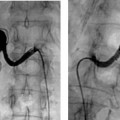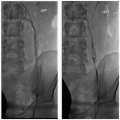The decision to change your career path from a hospital-based practice, whether it’s from being a hospital employee or a member of a private practice, can be an emotionally draining choice that is complex and overwhelming to say the least. There are many factors to consider before making this switch, but most importantly, one must realize it may be the hardest but most rewarding work in your career. While the physical, emotional and financial stresses placed on you while developing a practice can be rather demanding, on the flip side, if done correctly and the practice thrives, it can be a change that will bring you great pride and satisfaction, as well as personal reward and freedom.
Transitioning from a hospital-based practice to an office-based lab (OBL) is a decision that cannot be made lightly and must be done with much forethought and intense investigation. There are a variety of reasons why a physician may decide to transition from a practice that is hospital-based to office-based, but whatever the reason may be, there are many considerations to ensure a wise choice is made. These considerations include; who do you want to work with, partner with and why, do you want to do this alone or engage a third party to help you navigate the course and execute the plan; how will the project be financed, who will evaluate and execute the plan to be profitable as quickly, effectively and efficiently as possible, will you be an OBL, ambulatory surgical center (ASC) or hybrid lab, who will ensure credentialing with insurances, negotiate insurance contracts, obtain state and local licenses, will revenue cycle management, billing and collections, as well as denial appeals be done in-house or outsourced, will you seek accreditation and who will prepare the center for inspection. These are just some of the matters you will need to address during your practice creation.
Before you make any changes, a thorough due diligence needs to be completed to help you determine whether or not to take the leap as well as the potential viability of such an endeavor. In starting an office-based lab, you should best prepare yourself and spend a year understanding the ins and outs of the OBL world including financing, insurance contracts, referral patterns, marketing, equipment options, employee negotiations among many other issues you will encounter. Obtaining knowledge in financial planning, OBL & ASC state requirements, and the length of time to set up a successful outpatient practice are very important pieces of information in this journey.
If, after careful thought and exercise, you are convinced to move forward and opening an OBL seems to be an attractive option for you, there are steps you should take to help finalize this move. According to the University of Massachusetts /Dartmouth, there are 7 steps to effective decision-making that can be found at http://www.umassd.edu/fycm/decision-making/process/ . These 7 steps are outlined below.
Step 1: Identify the Decision. The decision would be to leave your current hospital-based practice and transition into your office-based practice.
Step 2: Gather Information. You need to gather information that is relevant to the decision and will help determine if this move will be a reasonable and viable one. You will need to decide what information is important and where will you obtain it. This includes putting together a very detailed pro forma for your first three years, which will help guide the business development as well as financing, as banks or outside financing options will all require this before any agreement on financing the project is completed. This includes listing all the procedures you plan on doing in the OBL, the volume as well as expected reimbursements based on insurance breakdown. You will need to estimate the percentage of Medicare patient’s vs other insurance players and the reimbursements for those procedures based on the insurance. Do you know where your patients will come from, and do you have referral patterns already set?
Step 3- Identify Alternatives. The alternatives which need to be identified may include the type of practice set-up might be most successful for you (individual vs partnership, single specialty vs multispecialty partnership), or what are your funding resources (self, bank, business partners, private equity, etc.). The more extensive and detailed the information gathered, the greater the likelihood of a successful decision and outcome.
Step 4: Weigh the Evidence. This step would include comparing OBL reimbursements to those performed in an ambulatory surgical center (ASC), as this information may help drive your business decision as to the type of center you will develop. There are pros and cons to each of these options which are often driven by the reimbursements of a procedure done in the OBL vs an ASC. It may be best to consider a Hybrid lab, one that can act as an OBL one day and an ASC on another, depending on the case type and reimbursement on any given day. The ability to have an ASC designation is one that is state by state regulatory dependent. ,
Step 5: Choose Among Alternatives. After all the information is gathered and the evidence is weighed, you can then consider the alternatives, some of which were mentioned above and include: which practice type is right for you (single specialty vs multidisciplinary practice), the number and type of partners (physician vs businessperson), and the breakdown of the ownership (sole ownership vs multiple partners). Other considerations include marketing; how will you grow the referral base, what will your marketing strategy include (word-of-mouth, social media, internet, radio, TV, in-person educational events, pamphlets & brochures, screening programs among other strategies). Once all this information has been gathered, you can carefully dissect it, weigh the evidence, and come to an educated decision as to which practice alternatives would be best for you.
Step 6: Take Action. Once the decisions are made, it is time to implement the alternatives and put into action the steps necessary to accomplish your goal. This includes formation of your practice, including all legal documents, obtaining appropriate business licenses, insurance coverage, secure financing, hiring staff, obtaining insurance contracts, etc.
Step 7: Review Your Decision & Its Consequences. A critical step is to take time every so often to review your plan and decisions made and be flexible to make changes along the way to best ensure your practice will be successful. One vital way to maximize your greatest potential, is to surround yourself with knowledgeable and trusted personnel.
Now that you’ve decide to move forward, one of the most important exercises you must undertake is that of creating a detailed pro forma statement, something that will be required by banks and investors when searching for financing options. The pro forma financial analysis can be used to create investment projections, financial statements, cash flow projections, income statements and balance sheets as well as a risk analysis of the practice. When completing the pro forma, it is imperative that you be brutally honest in forecasting your potential patient referrals, case variety, and volume to best estimate your earning potential and as a result your financial viability. This will not only be important to any lending institution or partner but can help guide you when developing your business plan. The pro forma will allow you to forecast the time to profitability, and more importantly, how long you may need to be without income. If things don’t go as planned, particularly in the early stages, as the owner of the business you must be prepared to financially withstand the inability to collect a salary while burdening the weight of the OBL success on your shoulders. This may take a year or two to turn the corner to profitability, so be ready for some financially tough times.
If taking this risk and bearing the potential financial burden is too overwhelming, then the alternative of having partners to dilute the danger and financial strain should be strongly considered, particularly if you don’t have the tolerance nor financial strength to handle it alone. Creating a partnership that is right for you is a critically important move, and one you will have to live with. The details of the partnership makeup include the percent ownership of each partner, will maintain majority ownership, will the partner(s) will be voting or silent, will be clinically involved in providing an alternative source of work and revenue, or will they be solely a financial partner just to name a few details. You must engage legal counsel to help you work through the partnership creation and ensure your protection.
You should also be prepared to navigate challenges that are impossible to predict. “Expect the unexpected.” This became very clear most recently when the COVID-19 pandemic changed our world dramatically and forever. OBL’s had to maneuver through both government and state regulations as well as work with our partners and staff to best accommodate our patients in need of our care while dealing with our own and our family’s concerns of our personal health and safety. Without a doubt, the OBL practices stepped forward and became the only resource for those in need of urgent and even emergent care while hospitals were closed to non-emergent care. This gave me great personal satisfaction knowing I was helping to navigate my patients health and safety during this intensely difficult time.
Unfortunately for patients and practices alike, the OBL’s have more recently come under constant strains from Medicare, private insurance companies, and most recently our own peers, making life and practice as we once knew and enjoyed much more challenging. Medicare has been decreasing reimbursements to the OBL, , annually in an effort to maintain budget neutrality in healthcare. The lack of reimbursement increases to help offset inflation as well as the costs of doing business (increased cost of goods, staff wages, costs for employee benefits, etc.) have made it much more difficult to survive without having a strong business plan and the flexibility to maneuver through these times like offering a variety of procedures and products. This may include cash-based cosmetic procedures or a wellness service-line. Insurance companies seemingly continue to disrespect the hard work by physicians by requiring more work up front with prior authorizations, as well as denials both before and after the work has been completed. These denials seem to be growing at unprecedented rates and many without justifiable reasons. Perhaps most discerning is the peer crucifixion on physicians with thriving OBL businesses, in what seems to be an effort to discredit them. , This “lynch-mob” mentality is damaging to all of medicine as it not only causes disruption in the delivery of healthcare to those in need, but also is a huge injustice to our community when proven techniques are being characterized as harmful. Unfortunately, the distrust and malcontent amongst our peers is also causing a divide between subspecialty societies and colleagues that is extremely harmful to medicine.
Despite the seemingly long list of cons, there are many more pros to owning your own practice and OBL, such as the lack of red tape seen in larger institutions and hospitals. Practicing in an outpatient lab allows the owner and operator the ability to make changes that benefit the patient and improve outcomes in a quick manner. Early on, it was evident to me the importance for me to be able to make work related decisions quickly and effectively. Examples include how much time I would spend with my patients, my work hours and schedule, how much time I would take off, and what interventional procedures I wanted to offer my patients. Cosmetic procedures may be important to you, a service-line that would be very difficult to develop in a hospital setting. In private practice, there is more time to spend on things that really matter to you, like direct patient care, rather than the nuisances of hospital committees. You can spend more time improving and implementing changes quickly and efficiently that can have a significant and positive affect on the practice. You can seamlessly make changes to protocols or obtain new technology that can benefit the patient and improve procedural outcomes. If there are alternative treatment techniques or devices that I want to trial, it is much easier to implement those changes. The real beauty in the OBL is that you don’t have to seek approval to do things you see as beneficial to your patients from a long line of administrators that may have no clue as to what you really do. This is not to say there won’t be struggles or consequences with decisions along the way, but there is so much more flexibility to rapidly improve the negativities that will allow you to not only enjoy your work, but also enjoy delivering care to your patients who are thankful for what you do.
These seemingly minute decisions have led to some of my proudest moments and most meaningful compliments. Patients repeatedly tell me that I spent more time with them than any physician they have met, and that I perform the most thorough physical exam they’ve ever undergone. These sentiments can spread like wildfire throughout your community and most importantly to your referring physicians. It proves that word of mouth still works, particularly in a small community and can be a very inexpensive marketing tool.
With all the time-consuming work and decisions being made, one very important comment here is that one must be extremely mindful of the focus and time commitment needed to build a successful practice (particularly in a single provider model). The excessive time needed to develop a practice can lead to frustration of your significant others as well as burnout quickly creeping into your life before you know it. Emotional turmoil and burnout can lead to poor decision making, unhealthy daily practices and frustration which can spread throughout your staff like a cancer and destroy everything you’ve worked very hard to accomplish. Therefore, it is critical to listen to those around you, who love, trust and respect you and can likely see the warning signs of such a potential disaster more easily and earlier than you can. Your spouse or loved one is perhaps the best trained individual to identify this potentially destructive problem early on. Maintaining a healthy work-life balance is crucial to creating a happy work environment for you, your family, your staff, and patients alike.
Other points of importance are outlined below.
Staff
Concerning your staff, one invaluable lesson learned is to surround yourself with excellent, knowledgeable, and pleasant staff. This may sound obvious, but it could be the single most important decision you make as a business owner. At the top of the list, is having someone in the role of CFO/COO/Business Manager who you trust, will have your back at every turn, and has experience in managing both finances and staff. No matter how busy your schedule is, or excellent your clinical work may be, without a skilled person overseeing the operation daily, it can all fall apart very quickly. It is an absolute must that this person accounts for every penny, takes responsibility to ensure all patient bills are coded correctly and submitted for payment in a timely fashion, and communicates routinely with you/partners, the financial status of the practice and implements actions to maximize your profitability.
Revenue
Revenue generation and accounts receivable is also critical as nothing will get accomplished without revenue to pay the staff as well as all the expenses incurred. Be aware that as the owner, you will always be the first to take the financial “hit” when the funds are low, so prepare yourself for a time when you may be unable to collect a salary. Some estimate this could be a year! One way to minimize the financial danger is to the dilute the risk with partners. Unless you have resources that can manage all aspects of revenue cycle management, it may in your best interest to contract out to an experienced third party for a management service agreement or revenue cycle management.
Practice Building
Practice building, and ultimately your success, is directly dependent on having a constant flow of patients. This is best achieved with a robust marketing program. There are a variety of marketing techniques and tools, and the effectiveness of each can vary based on the type of practice, business partners, location, procedures to be offered, and competition among other factors. Obviously, it is essential to market yourself, your product, the quality of care provided, the ease of scheduling, the comfort of your office as well as other important details. You need to “create your brand” that potential patients will associate to your practice. Relying on your reputation will only take you so far as it will be difficult to survive on reputation alone in the ever so challenging and changing landscape of medicine. For me, the most effective marketing tool has been the in-person lunch & learns & educational dinner presentations to referring physicians and physician extenders. Remember, there is always a component of “out of sight-out of mind” as with all businesses, therefore sending informational pamphlets, Tri-folds, business cards, etc. to each referral source will help keep your practice in the front of their mind. Additional reminders and marketing tools include sending office notes, procedural reports and perhaps the greatest personal touch is making individual calls to the referring physician about their patients. This can only maintain and strengthen your relationship and something most referring physicians respect.
Insurance
Perhaps the most unpleasant aspect of private practice and the OBL is having to directly deal with insurance companies, as we are often held hostage to whatever the insurer believes is “appropriate” medicine. There are many ways the insurance company may create financial difficulties and frustration for the practice, most of which fall under the topic of denials. There are a variety of ways which denials occur, from preauthorization denials to requesting multiple records prior to payments being released, to post procedure denials for a multitude of reasons, not all being evident prior to the procedure being performed. In an effort to minimize the denials, you should take extreme effort to be as detailed and all-inclusive as possible in documenting the patients’ complaints, the findings on both physical exam as well as on imaging and work-up, in addition to documenting every step of the procedure and findings related to the treatment. The more inclusive and detailed the notes, the less likely questions and denials pertaining to your delivery of care there will be. With this in mind, it would be beneficial to have someone on your staff be versed in dealing with insurance companies and denials, and to create a path of communication to your state’s insurance commissioner.
Concerning insurance contracts, a small OBL may be at a major disadvantage in negotiating insurance contracts, particularly in a sole owner practice. Small practices lack patient lives and have limitations to providing coverage for all the insurance companies clients compared to hospitals or larger groups. Despite the benefit of lower costs for delivery of care, a single provider has no negotiating power in trying to obtain better reimbursements. Even after benefits can be realized by the insurance company, they are usually unwilling to renegotiate more favorable contracts to the provider. In the beginning, you may need to be all-inclusive of patients’ insurance rather than choosing only those with reasonable rates. Although challenging at times, you must always remember the services you provide as a physician are often improving both a patient’s quality of life as well as length of life and may be life or limb-saving. No matter which tactic the insurance payor may employ, the physician deserves to be fully and properly compensated for their work.
The decision to move from a hospital-based practice to an office-based one is a move that requires much forethought and exhaustive evaluation prior to undertaking the endeavor. Nonetheless, after all is said and done, if performed properly and with great preparation, the office-based lab can be an extremely rewarding venture on all aspects.
There are no conflicts related to the contents of this chapter.
References
Stay updated, free articles. Join our Telegram channel

Full access? Get Clinical Tree








